Top 5 Indoor Plants
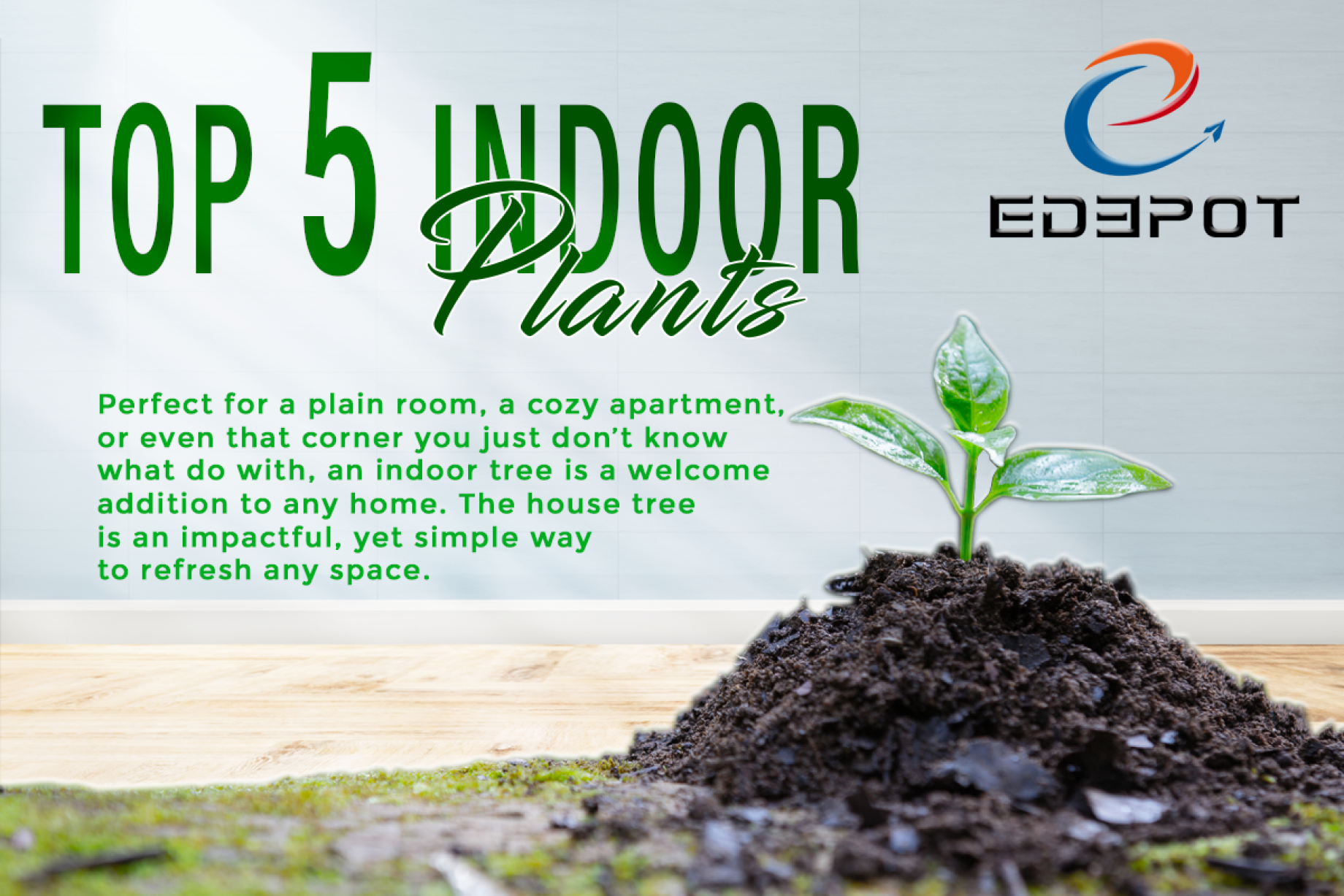
Perfect for a plain room, a cozy apartment,
or even that corner you just don’t know
what do with, an indoor tree is a welcome
addition to any home. The house tree
is an impactful, yet simple way
to refresh any space.
1. Lucky Bamboo
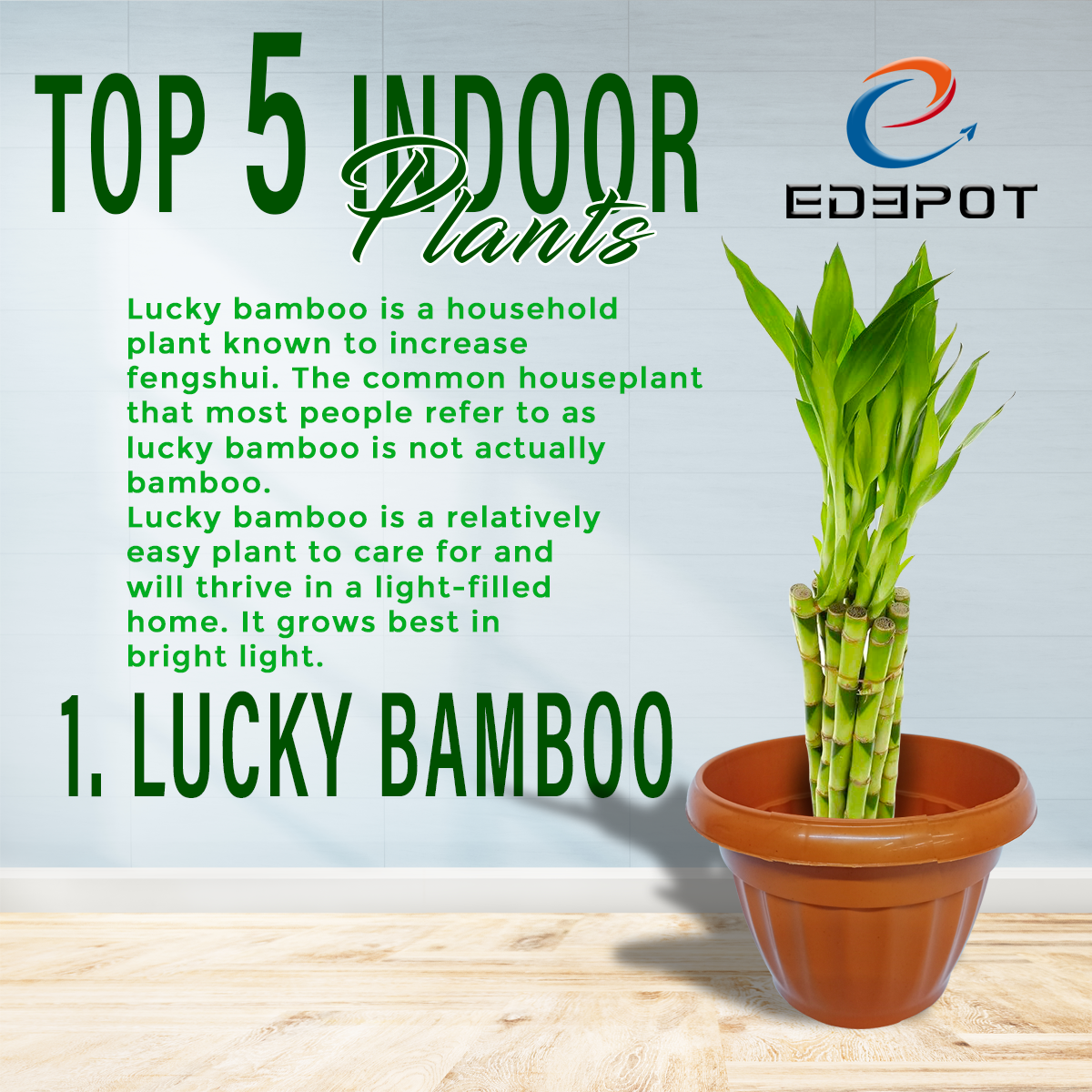
Lucky bamboo is a household plant known to increase fengshui. The common houseplant that most people refer to as lucky bamboo is not actually bamboo. While the stalks or stems do resemble bamboo, it’s actually called dracaena or Dracaena sanderiana.
Lucky bamboo is a relatively easy plant to care for and will thrive in a light-filled home. It grows best in bright light. While it can tolerate lower light levels, it won’t grow very much without a lot of bright light.1 Rotate your plant often so that the light reaches the entire plant evenly.
2. Money Tree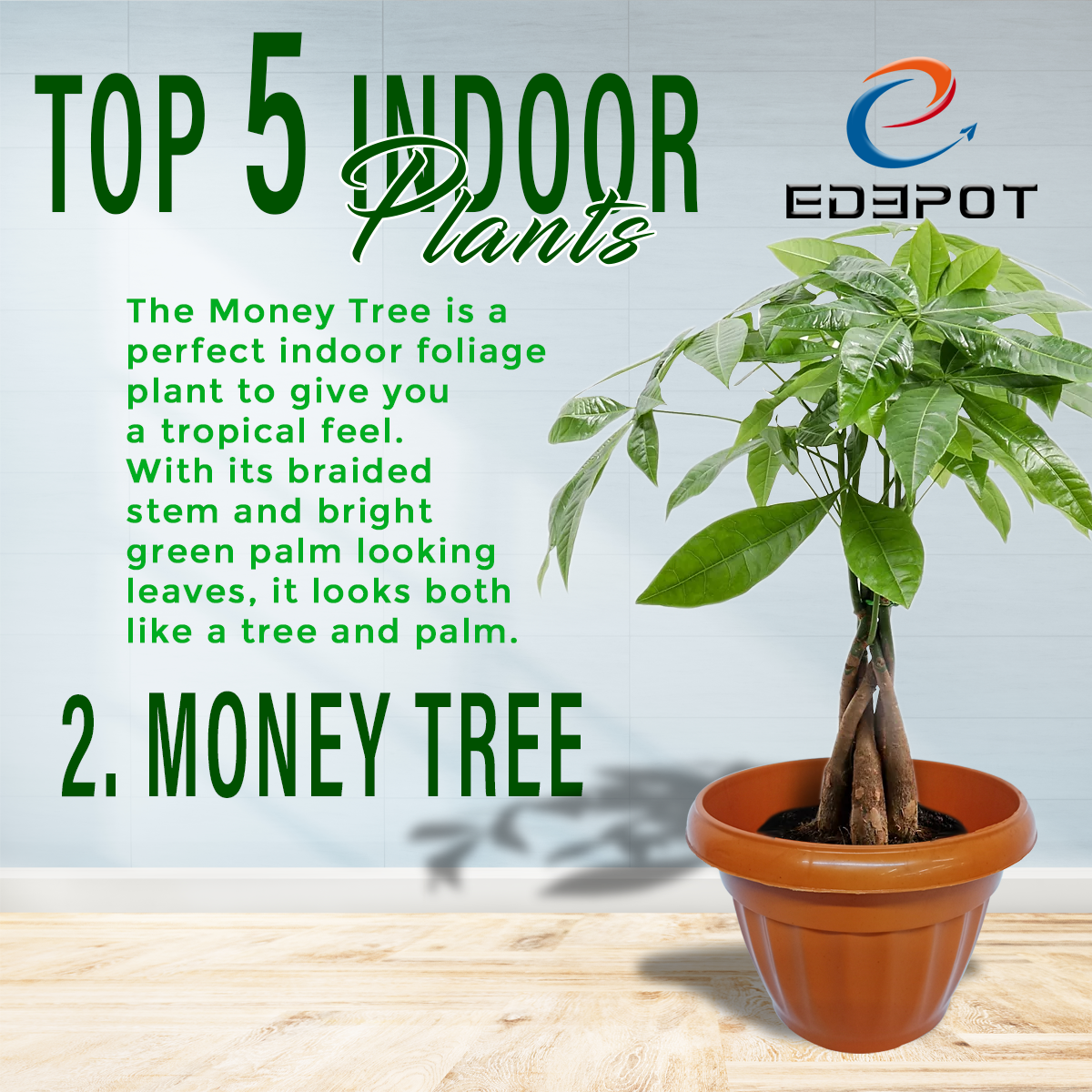
The Money Tree is a perfect indoor foliage plant to give you a tropical feel. With its braided stem and bright green palm looking leaves, it looks both like a tree and palm. Native from Mexico to northern South America, the Money Tree is also very popular in Taiwan and other East Asian countries.
The Money Tree gets its name from the FengShui belief that it will bring positive energy and good luck to the owner.
It has been said the Money Tree may reduce stress, anxiety, and may also help relieve sleeping disorders.
3. Succulents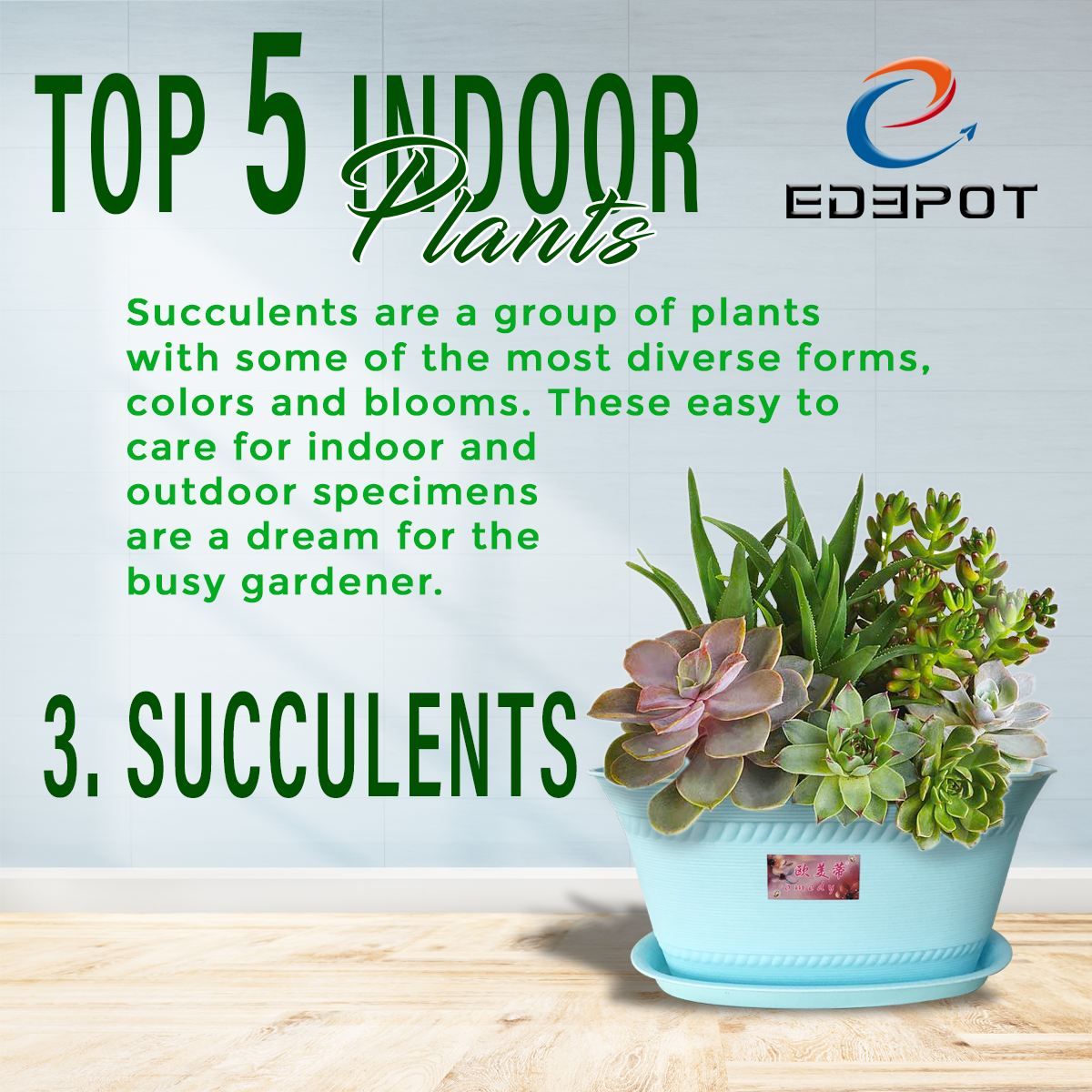
Succulents are a group of plants with some of the most diverse forms, colors and blooms. These easy to care for indoor and outdoor specimens are a dream for the busy gardener. What is a succulent plant? Succulents are specialized plants that store water in their leaves and/or stems. They are remarkably adapted to harsh climates where water is scarce or comes sporadically. Merriam Webster defines a succulent as “full of juice” or “juicy.” Read on for some fun succulent plant info so you can get started collecting the myriad of varieties available in this special class of plant.
It is important to note their hardiness range, but many of these can thrive in the garden. Smaller succulents make varied and fascinating container displays for the indoors. Almost all species need at least 8hours of light, warm daytime temperatures, consistent water during the growing season and well-drained soil.
4. Snake Plant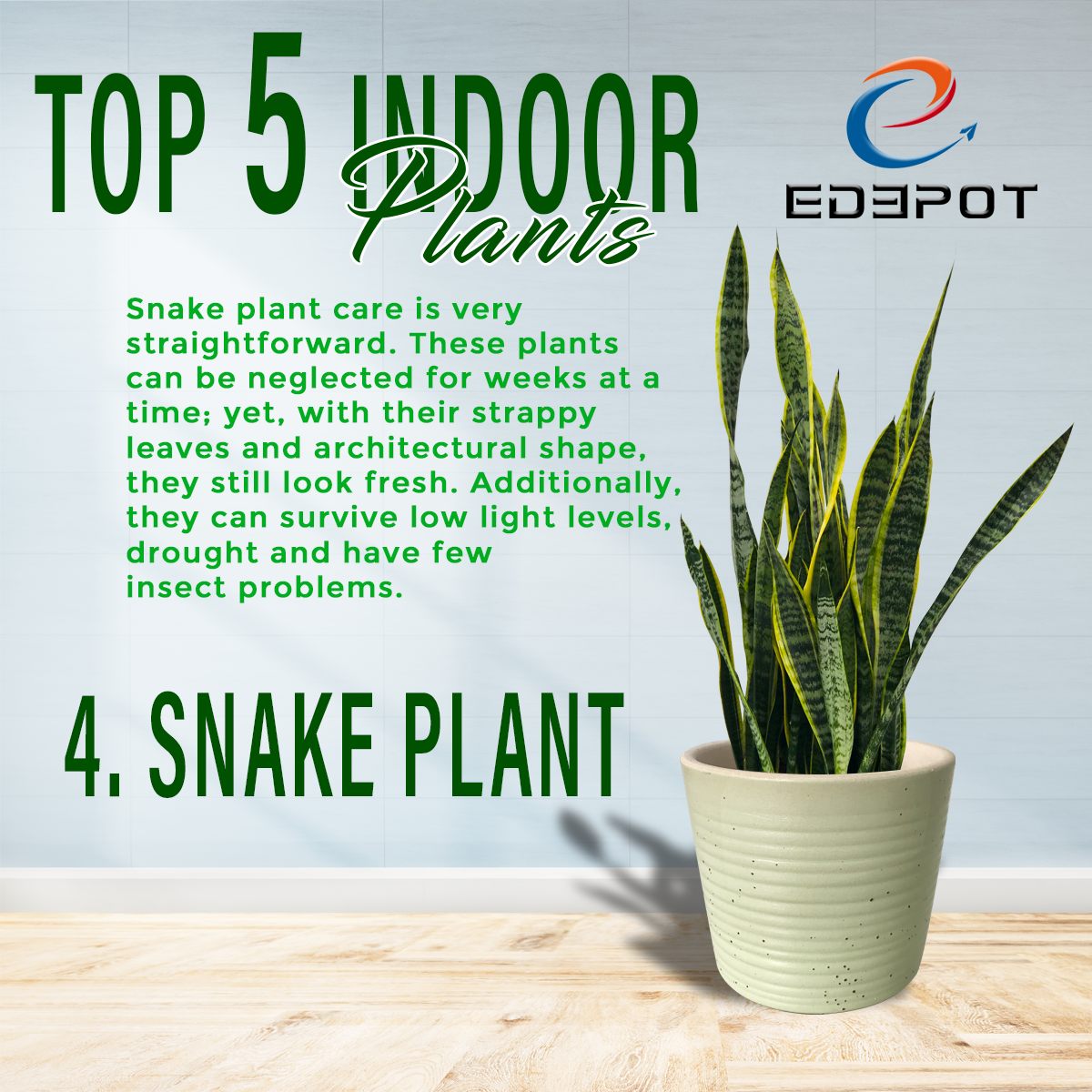
If a prize were available for the most tolerant plant, snake plant (Sansevieria) would certainly be one of the frontrunners. Snake plant care is very straightforward. These plants can be neglected for weeks at a time; yet, with their strappy leaves and architectural shape, they still look fresh. Additionally, they can survive low light levels, drought and have few insect problems. NASA research has even shown that snake plants are able to help keep the air inside your home clean, removing toxins such as formaldehyde and benzene. In short, they are the perfect houseplants. After they have been propagated, the care of snake plants is very easy. Put them in indirect sunlight and don’t water them too much, especially during the winter. In fact,it’s better to let these plants dry out some between waterings. A little general purpose fertilizercan be used if the plants are in a pot,and that’sabout it.
5. ZZ Plant
If ever there was the perfect plant for the ultimate brown thumb, the easy ZZ plant is it. This virtually indestructible houseplant can take months and months of neglect and low light and still look amazing. Previously, the ZZ plant would only be found in planters in malls and large office buildings where they would frequently be mistaken for fake plants, partially because they needed so little care and always looked healthy. But in recent years, they have found their way onto the shelves of both big box and hardware stores where anyone can purchase one. This has led to many people wondering how to grow ZZ plants. The short answer is that it takes very little effort.
ZZ plants do best in bright to moderate, indirect light, but will do fine in extremely low levels of light. This plant makes an ideal plant for a window-less office or bathroom where it will only receive small amounts of fluorescent light.

